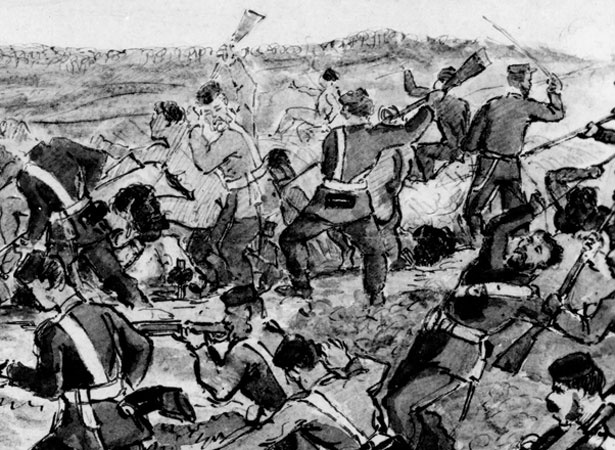
The British attacked the Ngāi Te Rangi stronghold of Pukehinahina (Gate Pā), defended by just 230 Māori fighters, after a heavy artillery bombardment.
When Gate Pā was built less than 5 km from Tauranga to provoke a British response, Lieutenant-General Duncan Cameron duly arrived from Auckland with reinforcements. On 28 April, 1700 troops marched towards the pā, which was shelled from daybreak next day.
The artillery bombardment was the heaviest of the New Zealand Wars, with huge Armstrong guns supported by howitzers. But Gate Pā withstood the barrage. Firing few shots, the defenders created the impression that the shelling had killed most of them.
In fact, 15 Māori at most had been killed by the bombardment. When a British raiding party assaulted the pā, the men became disoriented in a maze of trenches and were routed by defenders firing from concealed positions. The storming party suffered 100 casualties in 10 minutes before the survivors fled.
A disaster required scapegoats. The assault party were branded as cowards, the army blamed naval troops, and Cameron was accused of being too rash by some and too timid by others.
Read more on NZHistory
Taranaki and Waikato wars – New Zealand's 19th-century warsArmstrong 9-pounder gun – War in TaurangaTauranga 43rd Regiment NZ Wars memorial – Memorials registerTauranga Māori NZ Wars memorial – Memorials registerGate Pā – War in TaurangaHistory of New Zealand, 1769-1914 – A history of New Zealand 1769-1914
External links
How to cite this page
'Assault on Gate Pā', URL: https://nzhistory.govt.nz/bombardment-of-pukehinahina-gate-pa-begins, (Ministry for Culture and Heritage), updated 5-Nov-2020
